Discover the many differences between butterflies and moths
Many folks have a hard time distinguishing between butterflies and moths. As members of the Class Insecta, butterflies and moths share the common traits of having wings, an exoskeleton, a 3-parted segmented body with 3 pairs of legs, and one pair of antennae.

Monarch butterfly on milkweed
They both belong to the Order Lepidoptera (from the Greek lepis meaning scale and pteron meaning wing) which refers to their unique scale-covered wings. Below you’ll learn about the many similarities and a few differences between these two groups of closely related insects.

Let’s Review Basic Anatomy
Below, I’ll share some similarities and differences between butterflies and moths, but first, let’s look at the features they both have in common as shown in this image.
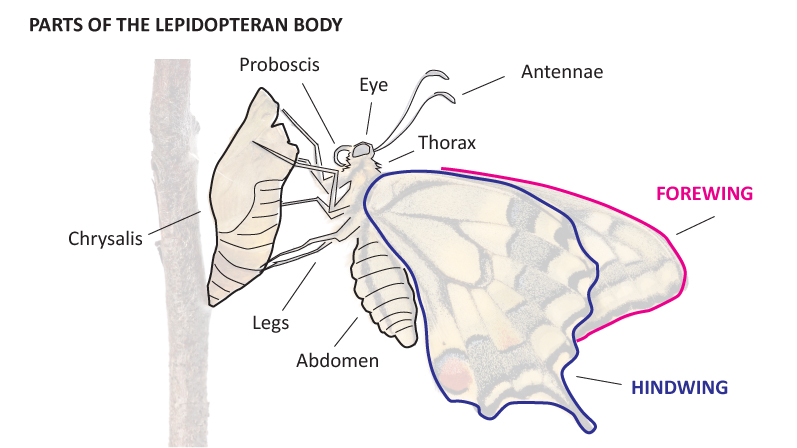
Butterfly vs Moth Antennae
One of the easiest ways to tell the difference between moths and butterflies is by looking at their antennae. Moths have larger, feathery or saw-toothed antennae (with the male’s being even larger to catch the scent of the female’s pheromones), while butterflies have skinny antennae that end in a club-like swelling. Some species of moth have skinny antennae-like those of butterflies, but only a very few species end in a club like those of a butterfly do.
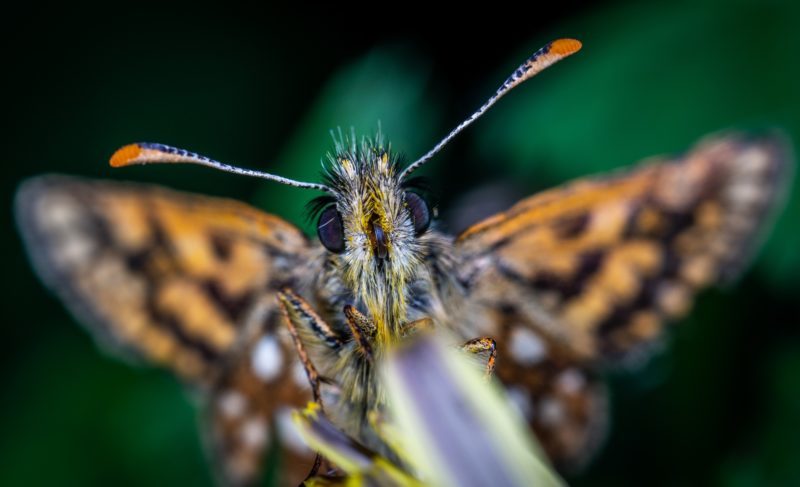
Closeup of butterfly head showing its clubbed antennae
Butterfly vs Moth Wings
Moths tend to hold their wings horizontally or in a tent-like fashion that shows the tops of their wings and that hides their abdomen. Butterflies tend to hold their wings vertically up over their backs, exposing the dull underside of the wing. Butterflies are typically larger and have more colorful patterns on their wings. Moths are typically smaller with drab-colored wings, although some species are indeed quite large and brightly colored like the one pictured below.

Moth resting with open wings next to its cocoon.
Butterfly Wing Anatomy
Like most winged insects, Lepidopterans have two pairs of wings; forewings and hindwings, which may or may not be similar in size, shape and color patterns. The tops of the wings are always more colorful than the undersides, which helps in alternately advertising their presence to mates and rivals or camouflaging them from predators.
Most winged insects have some common veins that make up the structure of the wing. These hollow veins carry nerves, blood, and tracheae. They also help to stiffen and strengthen the wing. Each order of insect and family within each order varies in the number and arrangements of these veins, which conveniently helps entomologists to identify individual species.
In my illustration of a swallowtail butterfly below, you’ll see generalized areas of the wings where the major veins are located. This family has a slightly different venation pattern compared to other families, which again, helps entomologists to identify them.
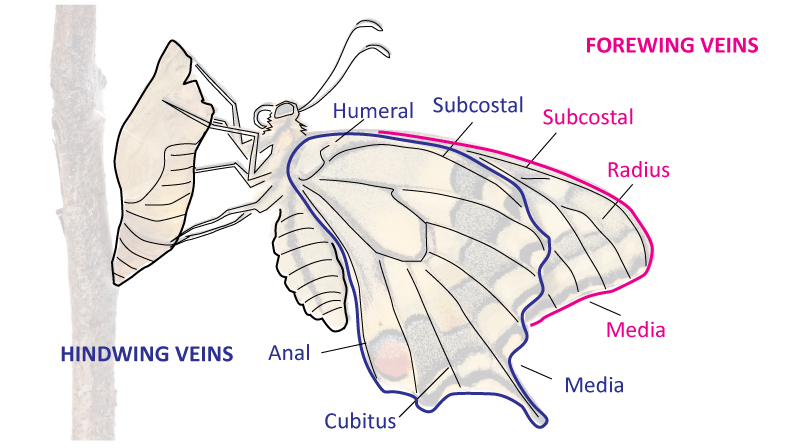
Butterfly vs Moth Bodies
The body of a moth is generally stockier and fuzzier, while butterflies are skinnier and lack as much hair. The moth’s body looks larger in proportion to its wings than a butterfly’s and its legs are shorter and stockier too.
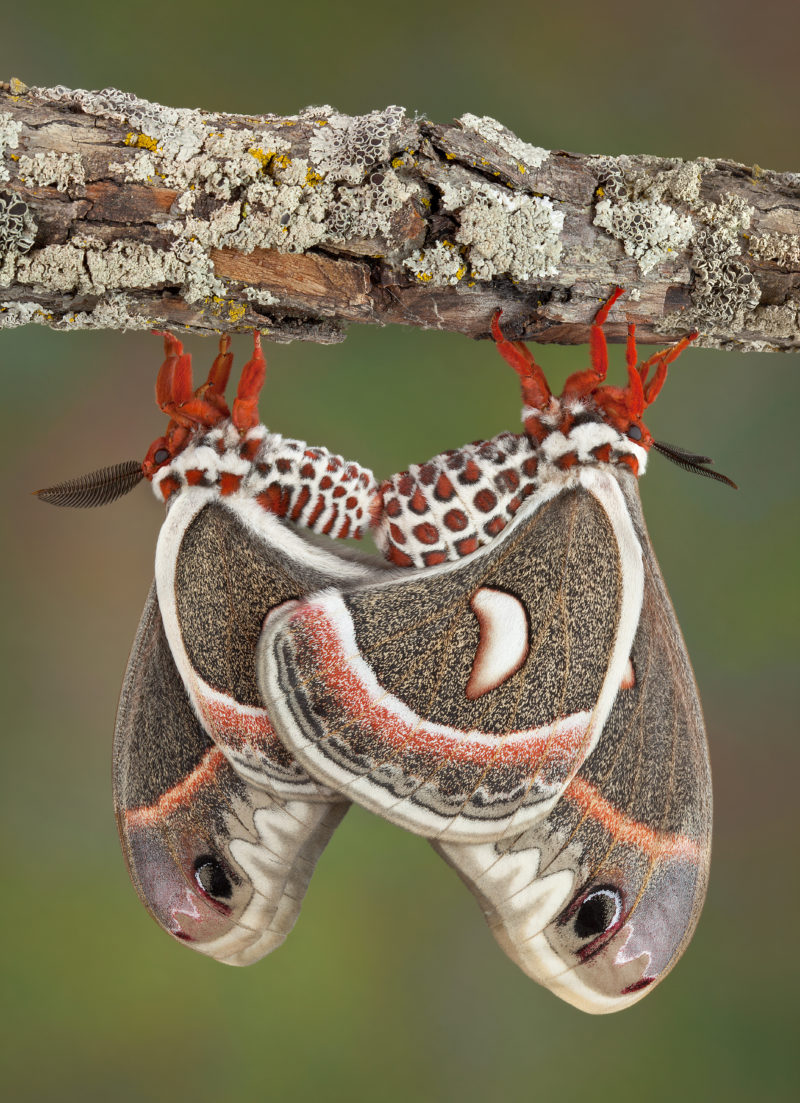
Two stocky-bodied Cecropia moths are mating while hanging from a branch. They can stay together for over 12 hours.
.
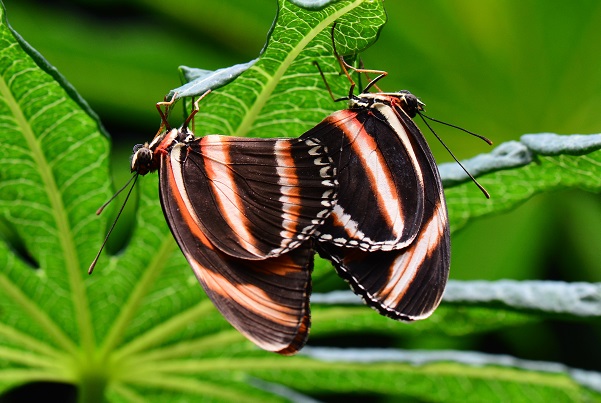
Mating Tiger longwing butterflies
Butterfly vs Moth Caterpillars
There are no hard and fast rules for distinguishing between the caterpillars of moths and butterflies. Both moth and butterfly caterpillars can be fuzzy or smooth.
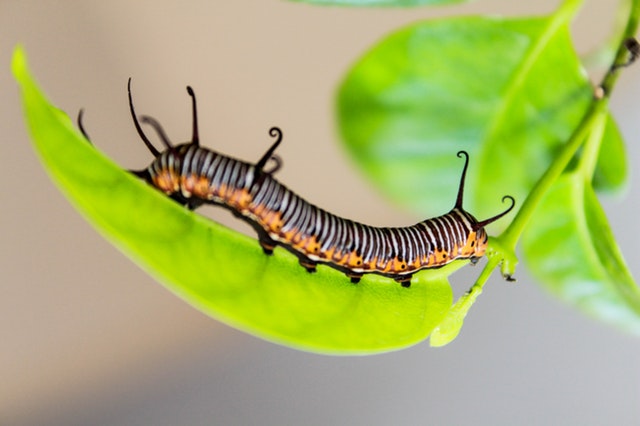
Butterfly caterpillar
.
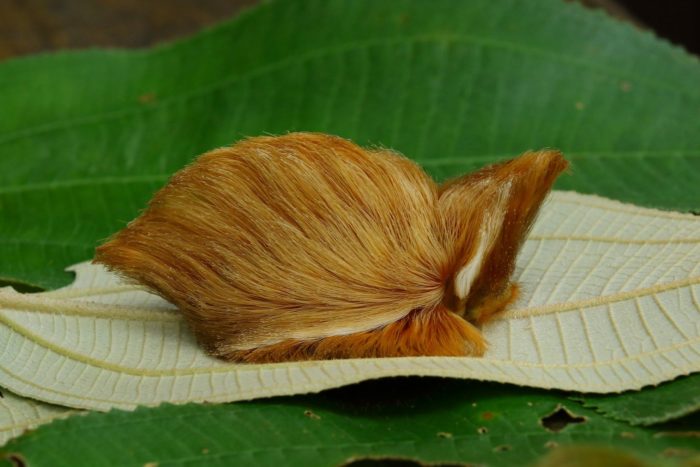
Flannel Moth Caterpillar
Butterfly vs Moth Cocoons/Chrysalides
Cocoons and chrysalides are protective coverings for the pupa. The pupa is the intermediate stage between the larva and adult. A moth makes a cocoon, which is wrapped in a soft, silky covering. A butterfly makes a chrysalis, which is hard, smooth, and has no silk covering.
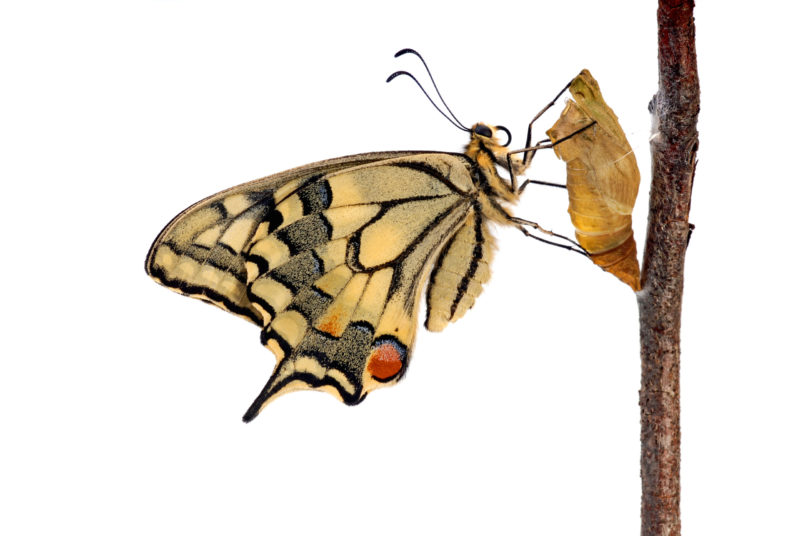
Swallowtail butterfly hatched from its protective chrysalis
Life stages of butterflies and moths
Butterflies and moths are ‘holometabolous’ meaning that they undergo a complete metamorphosis from egg to caterpillar and from chrysalis to adult. Scientists once thought that caterpillars were a different species than the winged adults and it wasn’t until the 18th century that it was discovered that they are both stages of the life cycle of one kind of animal.

Typical butterfly lifecycle

Monarch Butterfly lifecycle
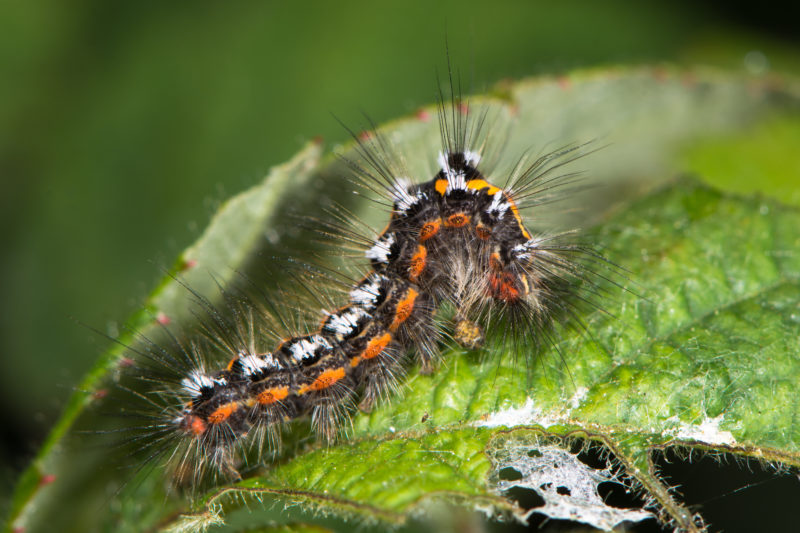
Caterpillar of a typical moth covered with irritating hairs
The painting below was made by the German-born naturalist and scientific illustrator, Maria Sibylla Merian, who traveled to Suriname in the 1700s and was the first to observe and illustrate the life stages of butterflies and moths and to realize that they were simply stages of the lifecycle of one species.

Metamorphosis of a Butterfly in Suriname by Maria Sibylla Merian, 1705
The Pipevine Swallowtail butterfly shown below is one of my favorite species, a familiar one from the foothills of California where I grew up. It can be found nectaring from (and thus pollinating) native thistles, lupines, buckeye, yerba santa, brodiaeas, and gilias. Interestingly, it lays its eggs on stems of the California Pipevine; whose flowers resemble those of a carnivorous plant (but aren’t) and whose leaves serve as the primary food source for this species of swallowtail’s caterpillars.
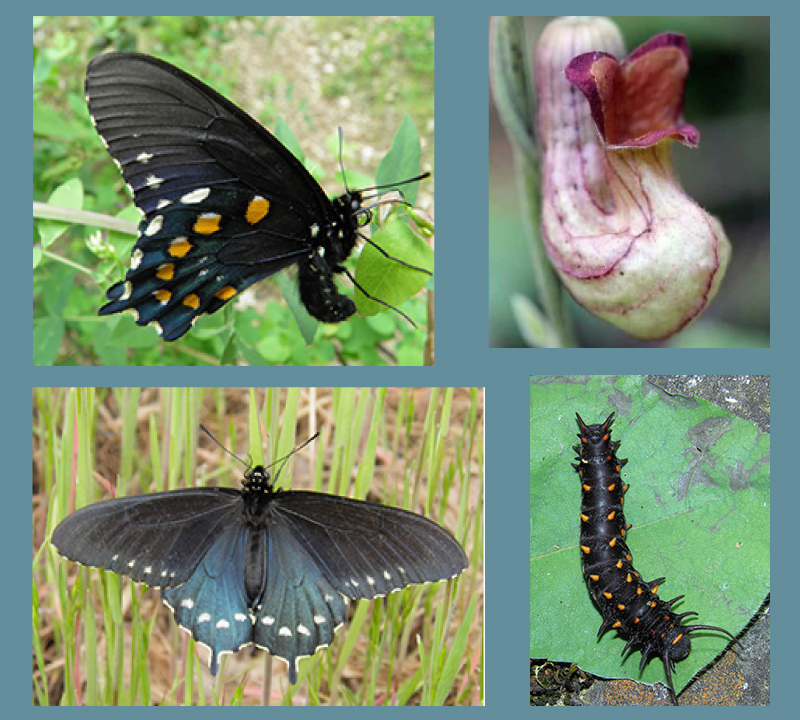
Pipevine swallowtail adult, caterpillar, and host plant; California Pipevine
Important roles as pollinators
Both butterflies and moths play important roles as pollinators of flowering plants. Some moths pollinate orchids and cactus while some butterflies pollinate many members of the diverse sunflower family, just to name a couple of examples. Despite their important role as pollinators, both butterflies and moths can be major defoliating pests of crops and forest trees so it’s a good thing that they serve as important prey species to both bats and birds.
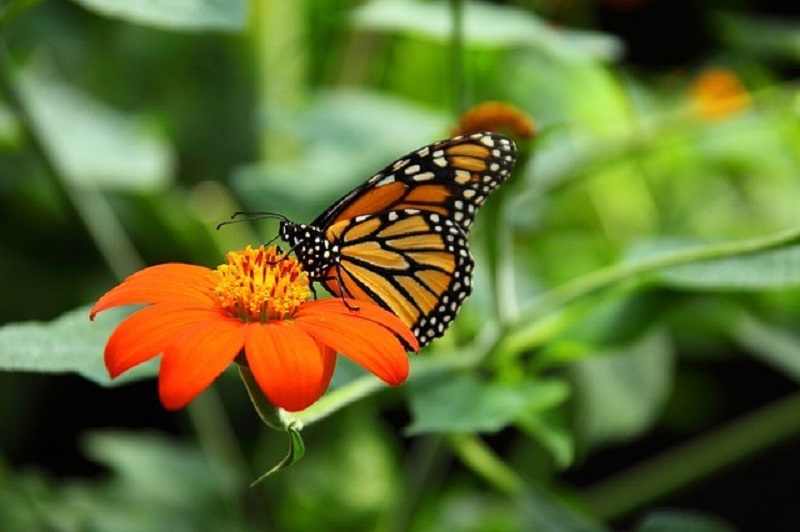
Butterfly vs Moth Behavior
Butterflies are primarily diurnal, flying in the daytime. Moths are generally nocturnal, flying at night. However, there are moths that are diurnal, such as the buck moth and there are butterflies that are crepuscular, that is, flying at dawn and dusk.
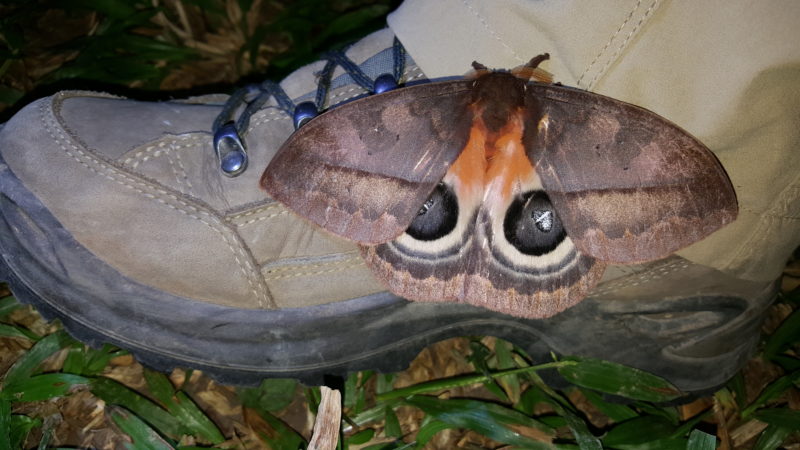
A Saturniidae moth on author’s boot in Honduras at nighttime
How you can help conserve butterflies and moths
- Grow native flowers, shrubs, and trees in your garden.
- Plant species that provide nectar. These include species that have evolved to be pollinated by moths, they are usually night-blooming and strong-scented. These include Jasmine, Honeysuckle, Evening Primrose, Sweet Rocket and Night-scented Stock and Tobacco. Butterflies feed on flower’s nectar during the day and enjoy a wide variety of plants depending upon the butterfly species such as milkweed plants for monarch butterflies.
- Don’t use pesticides. Just don’t. There are plenty of alternatives.
- Keep your yard a little untidy by leaving some areas with fallen leaves and branches for moths to hide and nest in.
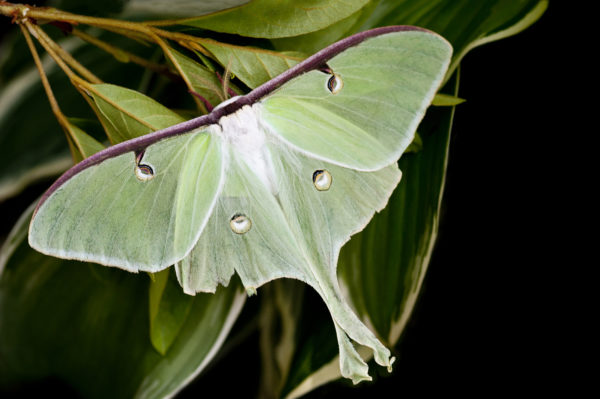
A beautiful Luna Moth
Some tropical butterflies
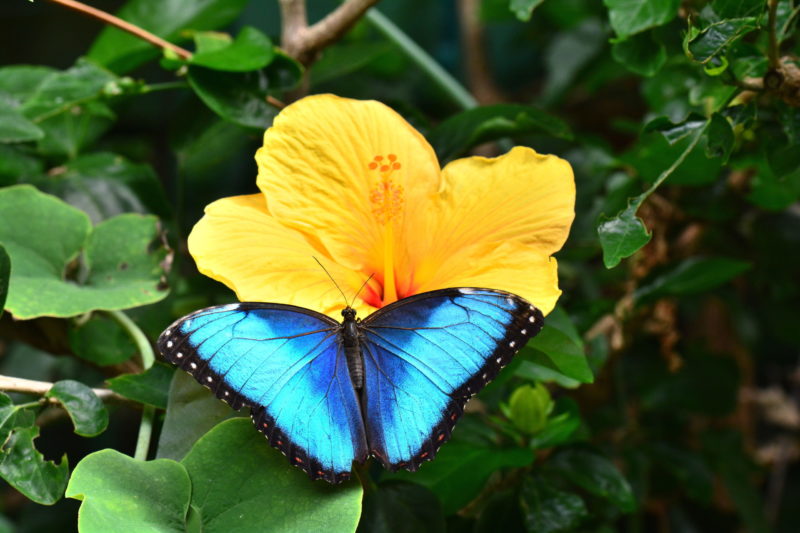
Blue Morpho butterfly of Central America
.
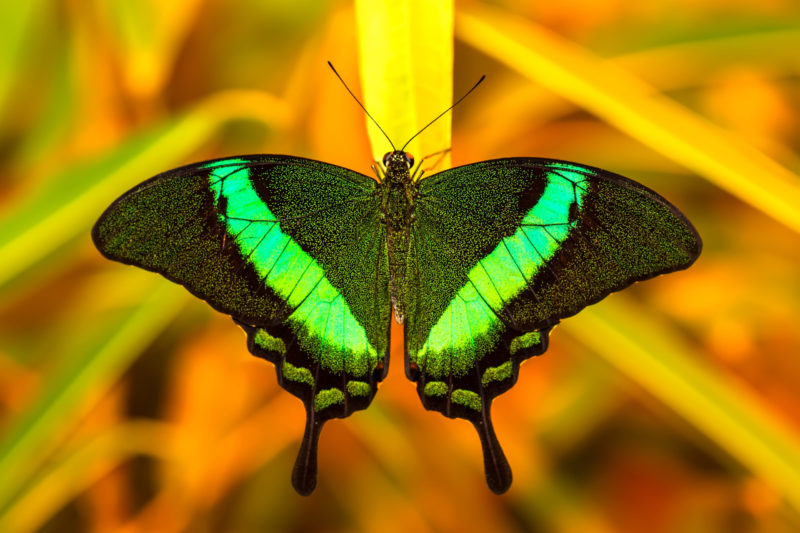
Emerald Swallowtail butterfly of Southeast Asia
.
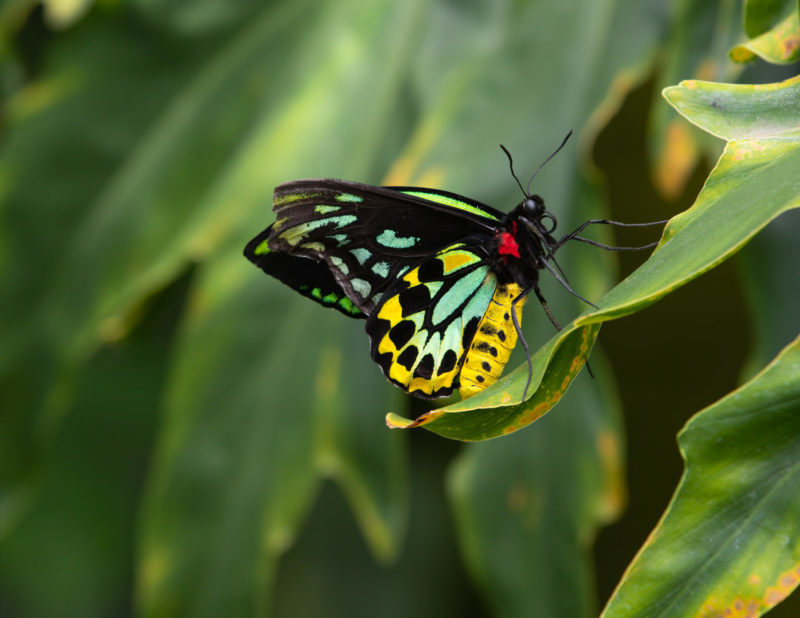
Queen Alexandra butterfly of New Guinea
.

Glasswing butterfly of South America
.
Julia Heliconian of Central America
.
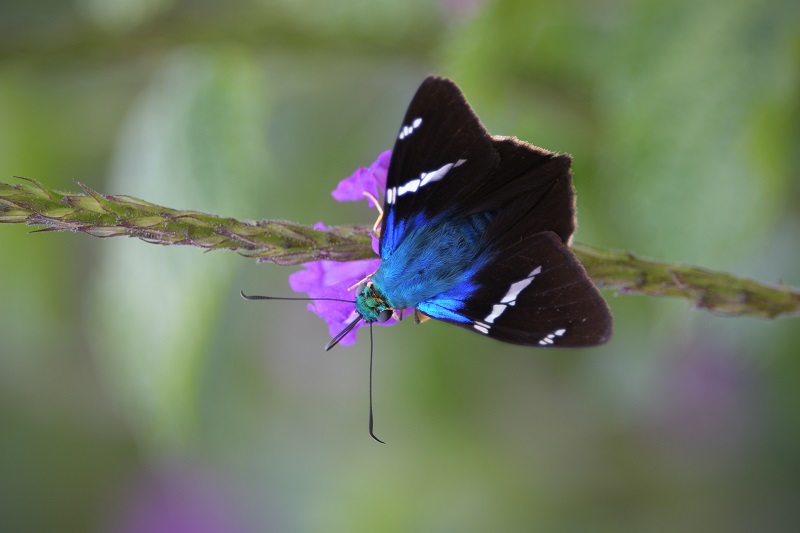
Two-barred flasher – A skipper butterfly in Costa Rica
.
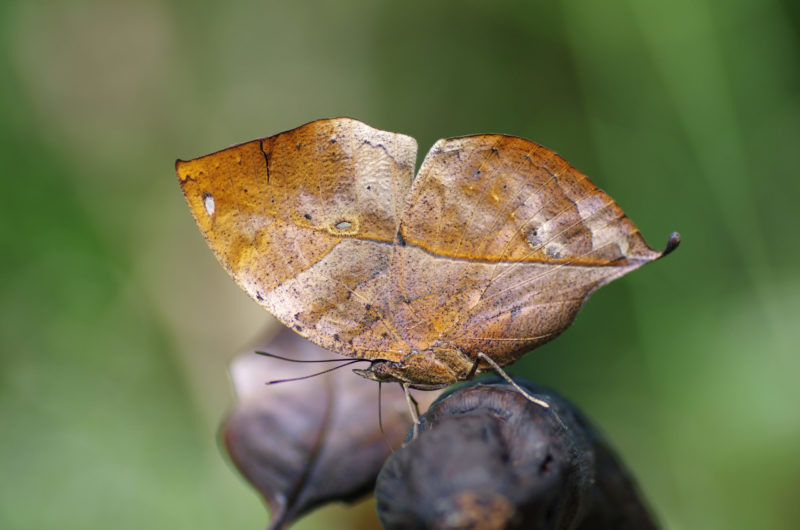
Dead Leaf butterfly from Southeast Asia
Online Butterfly Workshop
Below you can sign up for free to watch the recording of my online workshop in celebration of butterflies. In the workshop, I teach you about butterfly biology and anatomy then lead you through a step-by-step swallowtail butterfly sketching demonstration.
DOWNLOAD THE BUTTERFLY CHEAT SHEET
Learn more about butterflies and moths
- Animal Diversity- Lepidoptera – Information about the Lepidoptera order, which includes butterflies, moths, and skippers.
- Butterflies and Moths of North America – This site includes dynamic distribution maps, photographs, species accounts, and species checklists for each county in the U.S. and each state in Mexico.
- Butterflies and Moths of the World – From the Natural History Museum, London “There are currently an estimated 112,000 to 165,000 described species of butterflies and moths within 131 families.
- Xerces Society – Lots of good resources including recommended garden plants, monarch butterfly conservation, and endangered butterflies and moths.
- Learn About Butterflies website by British entomologist and photographer Adrian Hoskins.
- My blog post about moths.
- How to sketch a luna moth.
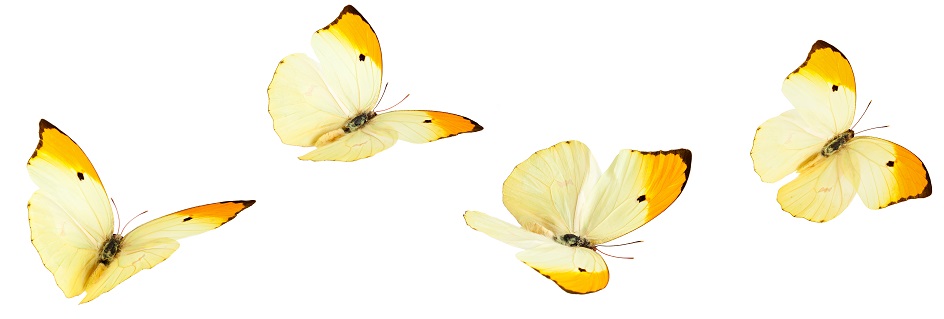
The Brain Scoop’s Emily Graslie talking about Lepidopterans


